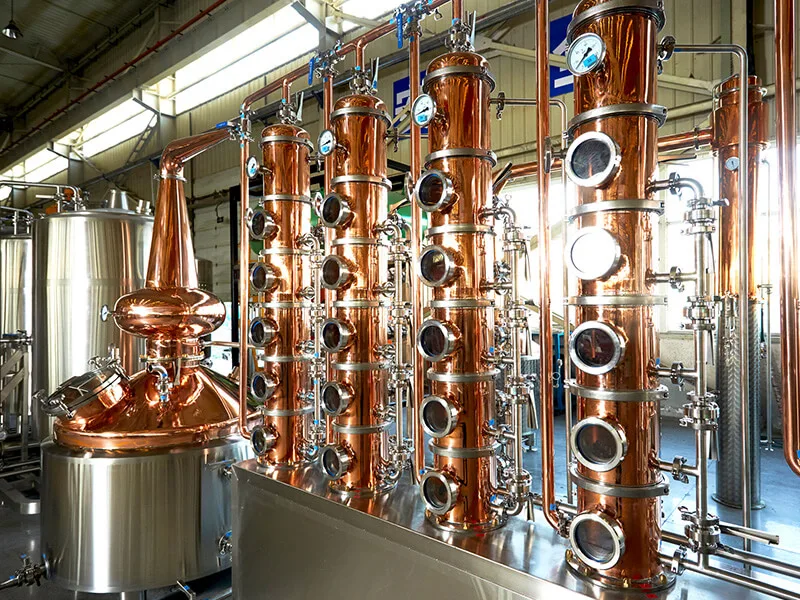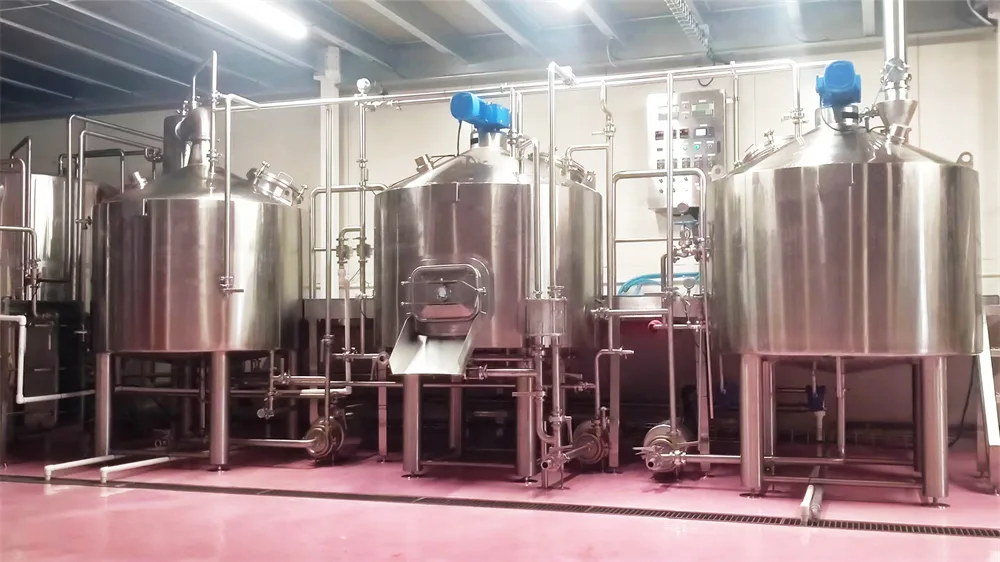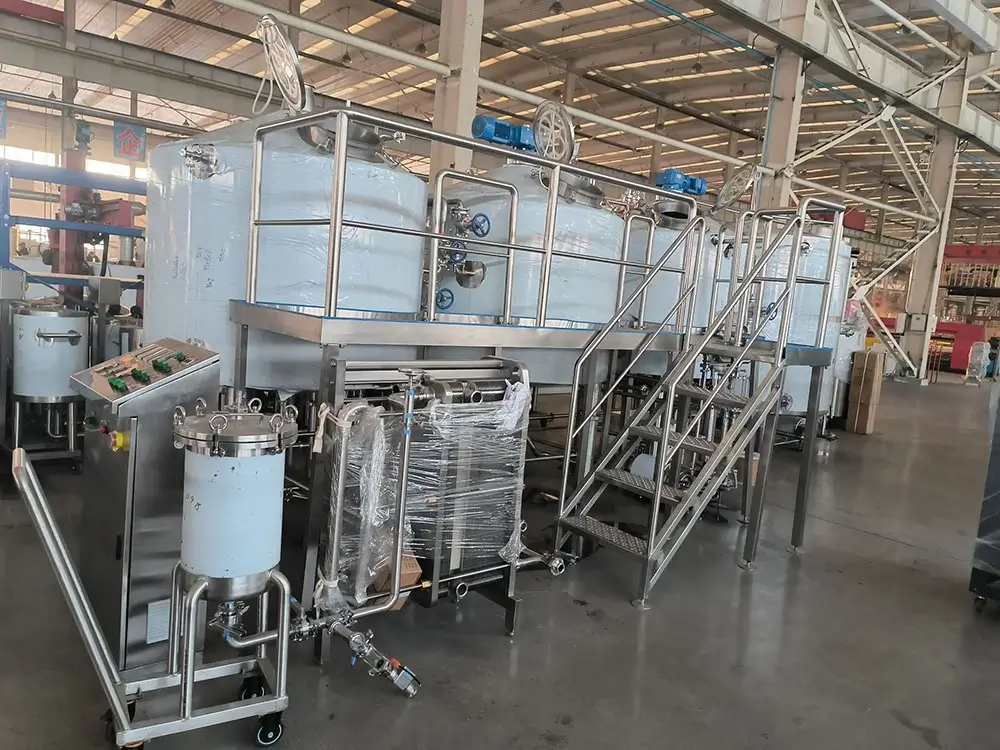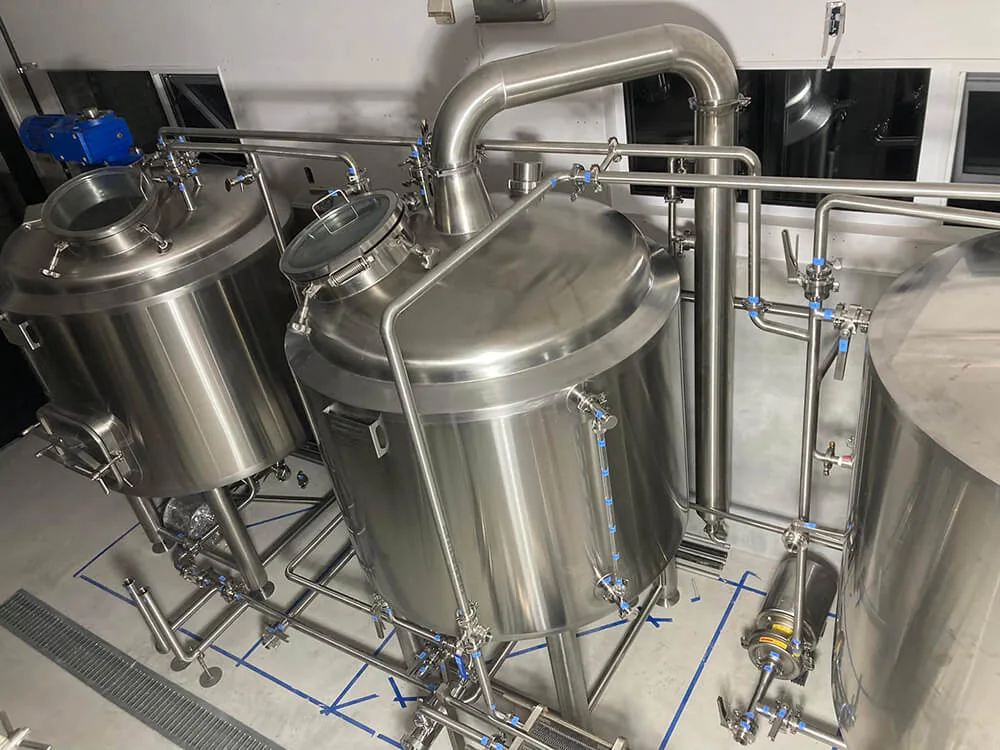Column stills, also known as continuous stills, represent an innovation in distillation technology and are now widely used in the large-scale production of spirits such as whiskey, rum, and vodka. Their core structure consists of a vertical distillation column equipped with multiple plates or packing materials, enabling continuous operation. During the process, a heating system at the base vaporizes the liquid feedstock, causing the alcohol vapor to rise through the column and pass sequentially through the various plates, where it undergoes repeated separation and purification. The internally designed reflux system further enhances separation efficiency and product purity. Finally, the purified vapor is condensed into liquid in the condenser and collected by the system according to different purity grades. Thanks to the efficient coordination of all components, column stills can stably and continuously produce high-purity alcohol and various distilled products.
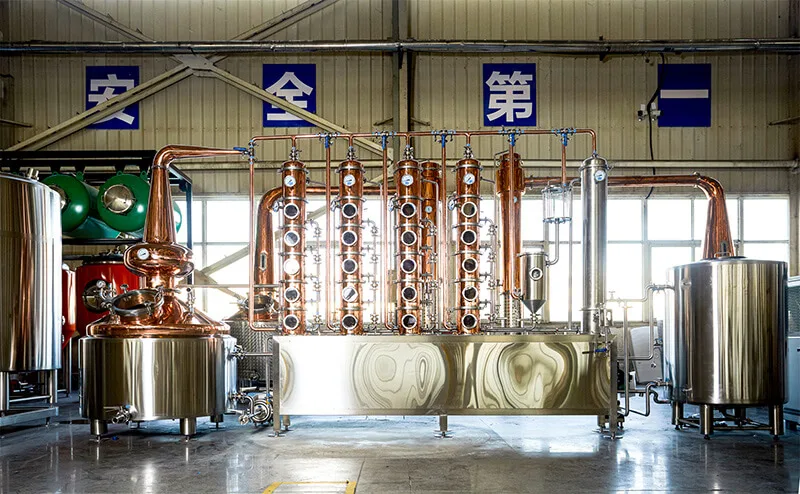
Working Process and Principles of Distillation Columns
The operation of a distillation column can be summarized in the following key stages:
1. Feeding and Initialization
The mixture to be separated (e.g., an ethanol-water blend) is continuously fed into the column, usually at its middle section. At the same time, the reboiler at the bottom begins heating, causing the liquid in the sump to boil and generate vapor.
2. Vapor Ascension and Reflux Descent
The vapor produced by the reboiler, enriched with volatile components such as ethanol, rises through the column. Simultaneously, the condenser at the top condenses a portion of the vapor into liquid, which flows back down as reflux. This establishes a counter-current flow: rising vapor and descending liquid interact continuously, facilitating separation.
3. Mass and Heat Transfer on Trays or Packings
This stage is the core of the distillation process. On each tray or section of packing:
- Volatile components (light fractions): Evaporate more readily due to lower boiling points, causing their concentration in the vapor to increase as it ascends.
- Less volatile components (heavy fractions): Condense more easily due to higher boiling points, increasing their concentration in the descending liquid.
Each tray effectively acts as a miniature separation stage, where:
- The vapor “washes off” heavy fractions and carries light fractions upward.
- The liquid “strips” light fractions and retains heavy fractions as it moves downward.
4. Product Extraction
- Overhead Product: After multiple stages of separation, the vapor at the top consists mostly of high-purity light fractions (e.g., concentrated ethanol vapor). It is condensed, with part collected as the overhead product and the remainder returned as reflux to sustain the separation process.
- Bottom Product: The liquid reaching the bottom, now largely free of light fractions, contains mostly high-purity heavy components (e.g., water). Some is drawn off as the bottom product, while the rest is reheated in the reboiler to continue the cycle.
The essence of column distillation lies in its multi-stage, continuous equilibrium process. By utilizing reflux to supply counter-current liquid, the reboiler to generate ascending vapor, and trays or packings to facilitate countless micro-level vapor-liquid equilibria, the system effectively enriches and purifies components based on their relative volatilities. Light and heavy fractions are concentrated at the top and bottom of the column, respectively, achieving highly efficient and precise separation.
Pot Still vs. Column Still: Tradition Meets Efficiency in Distillation
Pot distillation and column distillation represent two fundamentally different approaches, distinguished by the continuity of operation and how flavor compounds are handled. Pot distillation is a traditional, batch-based process. Its iconic copper pot and swan-neck design make continuous operation impossible. After each batch, the still must be emptied and refilled, often requiring two or even three distillations to achieve the desired purity. This “slow craft” approach selectively preserves congeners—trace compounds such as esters, alcohols, and aldehydes—that give spirits their distinctive flavors. As a result, pot distillation produces complex, characterful beverages like single malt Scotch whisky and Cognac.
In contrast, column distillation embodies modern industrial efficiency and precision. This continuous process takes place in a vertical column, where raw material is fed steadily and high-purity alcohol flows out continuously. The multiple plates or packing within the column act as countless miniature distillation stages stacked together, achieving extremely high separation efficiency in a single operation. The goal here is to produce neutral, high-proof spirits, such as the base alcohol for vodka, with minimal flavor.
Choosing between pot and column distillation ultimately comes down to a trade-off between flavor and efficiency: pot distillation is the art of preserving terroir and complexity, while column distillation is the science of achieving purity and scale.
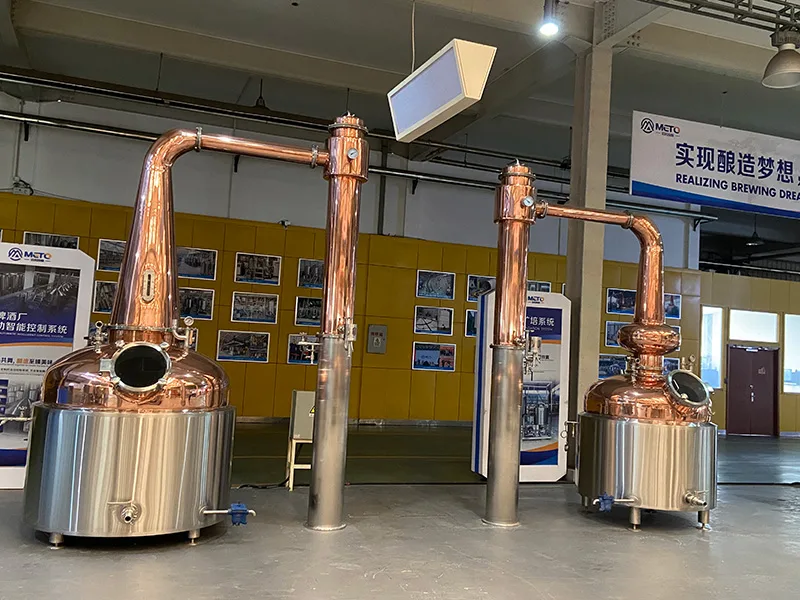
Conclusion
The true value of the column still lies in its ability to operate continuously while delivering highly efficient purification. This makes it an essential tool in modern spirits production. From producing ultra-pure vodka to balancing purity with flavor in rum and whiskey, the column still plays a pivotal role across the industry.
If you are searching for reliable, high-performance distillation equipment or wish to deepen your understanding of the distillation process, Meto offers professional solutions tailored to your needs. With a strong focus on research, development, and manufacturing of advanced distillation systems, we are committed to helping our clients achieve excellence in every batch. Get in touch with us today to explore more about distillation technology!

